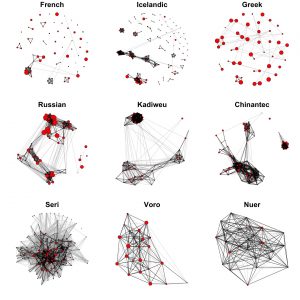 Andrea Sims and Jeff Parker have a paper, “How inflection class systems work: On the informativity of implicative structure”, in the most recent issue of Word Structure, a special issue on information-theoretic approaches to word and pattern morphology.
Andrea Sims and Jeff Parker have a paper, “How inflection class systems work: On the informativity of implicative structure”, in the most recent issue of Word Structure, a special issue on information-theoretic approaches to word and pattern morphology.
Abstract: The complexity of an inflection class system can be defined as the average extent to which elements in the system inhibit motivated inferences about the realization of lexemes’ paradigm cells. Research shows that systems tend to exhibit relatively low complexity in this sense. However, relatively little work has explored how structural and distributional aspects of the inflectional system produce this outcome. In this paper we use the tools of information theory to do so. We explore a set of nine languages that have robust inflection class systems: Palantla Chinantec, French, Modern Greek, Icelandic, Kadiwéu, Nuer, Russian, Seri, and Võro. The data show that the extent to which implicative paradigmatic structure does work to minimize the complexity of the system differs significantly. In fact, the nine languages fall into three graph types based on their implicative structure. Moreover, low type frequency classes disproportionately contribute to the complexity of inflectional systems, but we hypothesize that their freedom to detract in this way may depend on the extent to which implicative structure is systemically important. We thus propose that the amount of ‘work’ done by implicative relations in structuring inflection classes should be considered a typological parameter.